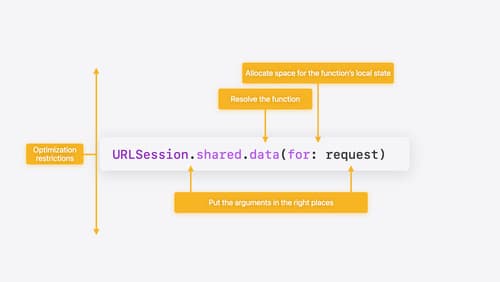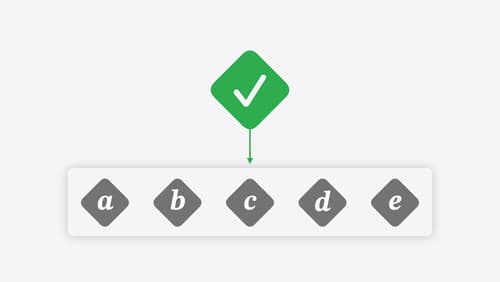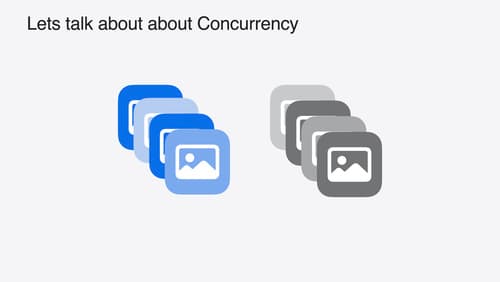Task AsyncStream await
Asked on 2024-10-03
1 search
The concept of async and await in Swift is a key feature for handling asynchronous operations. When a task is waiting for an asynchronous operation to complete, it suspends to yield the CPU to other tasks. This is modeled in Swift using the async and await syntax. A function that may suspend is marked with the async keyword, and the await keyword is used to indicate that a suspension can occur on that line.
In the session titled "Explore Swift performance," it is explained that async functions are implemented in a way that they keep their local state on a separate stack from the C stack and are split into multiple functions at runtime. This allows for efficient memory allocation and deallocation, which is crucial for performance.
For more detailed information on how async functions work, you can refer to the session Explore Swift performance (24:33).
Additionally, in the session "Go further with Swift Testing," it is mentioned that when writing concurrent test code, you can use the same concurrency features in Swift as in production code. The await keyword will suspend a test, allowing other test code to keep the CPU busy while work is pending.
For more on testing asynchronous conditions, you can check the session Go further with Swift Testing (24:26).

Explore Swift performance
Discover how Swift balances abstraction and performance. Learn what elements of performance to consider and how the Swift optimizer affects them. Explore the different features of Swift and how they’re implemented to further understand the tradeoffs available that can impact performance.

Go further with Swift Testing
Learn how to write a sweet set of (test) suites using Swift Testing’s baked-in features. Discover how to take the building blocks further and use them to help expand tests to cover more scenarios, organize your tests across different suites, and optimize your tests to run in parallel.

Discover Swift enhancements in the Vision framework
The Vision Framework API has been redesigned to leverage modern Swift features like concurrency, making it easier and faster to integrate a wide array of Vision algorithms into your app. We’ll tour the updated API and share sample code, along with best practices, to help you get the benefits of this framework with less coding effort. We’ll also demonstrate two new features: image aesthetics and holistic body pose.
